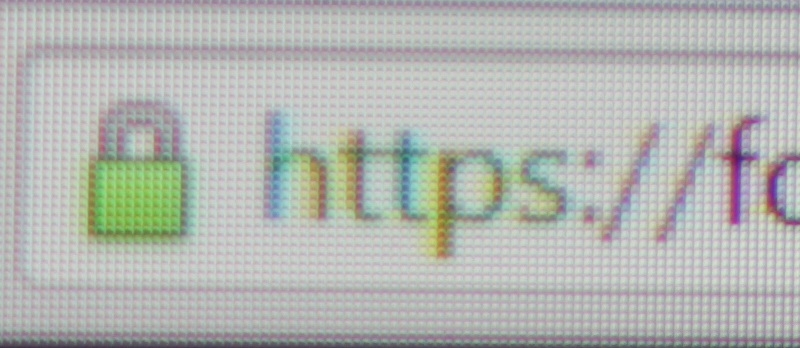
It allows to keep PV going, with more focus towards AI, but keeping be one of the few truly independent places.
-
I picked up a GTX 980 (reference model, EVGA) and although I am able to get 60Hz output on Samsung HU8550 by enabling UHD Color Mode it does not appear to be 4:4:4 (Full RGB) as there is noticeable fringing on text.
In the 60 Hz photo, you can see some yellow fringing on the edges of text. In 30Hz, the text is a solid color throughout and appears just as it does on my monitor.



 30hz_small.jpg800 x 244 - 108K
30hz_small.jpg800 x 244 - 108K
 60hz_small.jpg800 x 348 - 168K
60hz_small.jpg800 x 348 - 168K -
This doesn't really come as a surprise - they wrote this new darn
"4:2:2""4:2:0" mode into the HDMI 2.0 standard precisely for the reason that this would allow them to label TVs "can do 4k" without actually implementing the required (higher) bandwitdth on the wire.It's like with Bluetooth 2, where everybody expected "increased bandwidth" while this ("EDR") was actually just an "optional" feature, so companies could put stickers on devices advertising Bluetooth 2 while at the same time providing just the lame old Bluetooth 1 bandwidth...
-
This doesn't really come as a surprise - they wrote this new darn "4:2:2" mode into the HDMI 2.0 standard precisely for the reason that this would allow them to label TVs "can do 4k" without actually implementing the required (higher) bandwitdth on the wire.
You comment make no sense. 420 and 422 modes were always present in other resolutions and for a good reason, as many things exist that has output in this standards.
It is specific issue. As a guy who saw internals of some TVs firmware I can assure you that it can be even software thing or wrong setting.
-
I was wrong only in writing "4:2:2" while in fact HDMI 2.0 introduced only the YCbCr 4:2:0 mode as a new, "bandwidth reduction feature". HDMI versions up to 1.4b only supported YCbCr 4:2:2/4:4:4, using those would not have allowed 4k 60Hz with available bandwidth on existing HDMI wires.
-
It still make zero sense, as HDMI 2.0 support is implemented either by special chip (rarely) or by integrated LSI (MStar, etc, usually), such things support all HDMI 2.0 resolutions and modes for free. No savings here.
-
This article tells about the situation with the early 4k TVs, and this discussion on "HDMI 2.0 with only 4:2:0 support" sheds light on how the manufacturers save some pennys by not implementing the optional(!) 4:4:4 support for 4k signals in HDMI 2.0.
-
Do not understand how it is related to your statement. One just enabled mode on old cards that are still really not pushed by marketing as 60Hz 4K. Another topic is just old topic (by TV time standards).
My point is that such limits (if they are present!) come mostly from lazy developers (as I know situation even with 1080p and how many TVs do bad things if you plan to use them as monitors). All hardware can support it perfectly, it is just lots of idiots. If you look at internals of Sony, LG and Samsung - you won't be surprised.
-
My point is: You reported a TV (claiming HDMI 2.0 support) and a GFX card (claiming HDMI 2.0 support) to show only a visibly chroma-subsampled image. And I say: That's not a bug, they rightfully claim to be HDMI 2.0 compatible, but they opted to not implement a part of HDMI 2.0 that would require them to provide higher bandwidth links. Since this part of HDMI was deliberately specified by the industry as optional, you, the customer, are screwed, and won't be able to demand a "repair".
There is a reason why HDMI 2.0 allows manufacturers to only implement 4:2:0 at 8bit per channel, and that reason is to allow for cheaper links with less bandwidth than would be required otherwise.
-
That's not a bug, they rightfully claim to be HDMI 2.0 compatible, but they opted to not implement a part of HDMI 2.0 that would require them to provide higher bandwidth links. Since this part of HDMI was deliberately specified by the industry as optional, you, the customer, are screwed, and won't be able to demand a "repair".
Can you show me part about "optional"? I never really saw HDMI 2.0 implemented in such a way (I mean here actual chips).
I look after HDMI 2.0 TV state, and things are mostly ok. As I said HDMI 2.0 TVs appeared on the market only this year (except few top models). Issue described in top post can arise from multiple things starting from even wrong EDID or wrong modes table in firmware. LG had issues in early firmware and it was fixed.
-
At this time I've got no better reference to the "optional" aspect than this article (in German) on statements from the HDMI organisation when they were presenting HDMI 2.0 at the IFA 2013, which contains the following paragraph (translated here by me):
"The HDMI organisation clarified on friday in Berlin that the specificiation only makes an absolute minimum mandatory - 480p and two audio channels - and every other features named in the specification are optional. This was also the case with all preceding HDMI versions."
These statements together with Panasonic and Sonys move to advertise "software upgraded" HDMI 1.4 as "HDMI 2.0" have sparked quite an avalanche of bad press coverage in Germany, to the extend that many people now demand Display Port connectors on TV sets instead.
Howdy, Stranger!
It looks like you're new here. If you want to get involved, click one of these buttons!
Categories
- Topics List23,993
- Blog5,725
- General and News1,354
- Hacks and Patches1,153
- ↳ Top Settings33
- ↳ Beginners256
- ↳ Archives402
- ↳ Hacks News and Development56
- Cameras2,368
- ↳ Panasonic995
- ↳ Canon118
- ↳ Sony156
- ↳ Nikon96
- ↳ Pentax and Samsung70
- ↳ Olympus and Fujifilm102
- ↳ Compacts and Camcorders300
- ↳ Smartphones for video97
- ↳ Pro Video Cameras191
- ↳ BlackMagic and other raw cameras116
- Skill1,960
- ↳ Business and distribution66
- ↳ Preparation, scripts and legal38
- ↳ Art149
- ↳ Import, Convert, Exporting291
- ↳ Editors191
- ↳ Effects and stunts115
- ↳ Color grading197
- ↳ Sound and Music280
- ↳ Lighting96
- ↳ Software and storage tips266
- Gear5,420
- ↳ Filters, Adapters, Matte boxes344
- ↳ Lenses1,582
- ↳ Follow focus and gears93
- ↳ Sound499
- ↳ Lighting gear314
- ↳ Camera movement230
- ↳ Gimbals and copters302
- ↳ Rigs and related stuff273
- ↳ Power solutions83
- ↳ Monitors and viewfinders340
- ↳ Tripods and fluid heads139
- ↳ Storage286
- ↳ Computers and studio gear560
- ↳ VR and 3D248
- Showcase1,859
- Marketplace2,834
- Offtopic1,320





